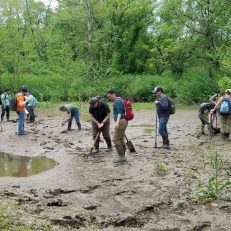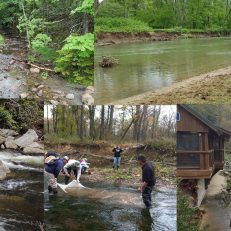Product Description
Are you prepared for the unique safety challenges of working in wetlands? Our Wetland Field Safety Training is a comprehensive, OSHA-compliant course designed specifically for professionals involved in wetland assessment and management. This two-hour webinar will equip you with essential skills and knowledge to recognize, prevent, and manage the various hazards that can arise in wetland environments.
What You’ll Learn:
- Understanding Physical Hazards: Extreme temperatures, sun exposure, noise, and other outdoor risks are covered in detail, including prevention techniques for heat stress, frostbite, and hearing protection.
- Identifying Biological Hazards: From vector-borne diseases spread by mosquitoes and ticks to venomous wildlife and poisonous plants, we provide strategies to protect yourself against these environmental threats.
- Chemical and Traumatic Hazards: Learn how to handle exposure risks from pesticides and chemicals commonly encountered in wetland work, along with best practices for avoiding traumatic injuries in the field.
- Real-World Tips and Best Practices: Our team of seasoned wetland professionals shares practical insights from years of field experience to help you stay safe and prepared for any challenge.
This training is ideal for environmental scientists, wetland managers, and anyone working in wetlands who needs to comply with OSHA field work protocols and is concerned about workplace safety. By the end of this course, you’ll feel confident and prepared to handle the unique challenges of working in wetland environments safely.
Enroll now to ensure your safety and compliance in wetland fieldwork!
Working in Wetlands
Working in wetlands presents various hazards that can impact your safety, including factors related to the type of work you’re doing, geographic location, season, and time spent outdoors. To help professionals like you navigate these challenges, The Swamp School has created a specialized webinar on wetland field safety. This OSHA field work protocols training will guide you in recognizing and preventing the many workplace hazards commonly encountered in wetland environments.
Wetland Safety
Wetland field safety is essential due to numerous outdoor physical hazards, such as extreme heat, cold, sun exposure, and noise. Working in high temperatures can lead to heat stroke, heat exhaustion, and heat rash, while extreme cold may result in hypothermia and frostbite. Repeated noise exposure can cause permanent hearing loss or tinnitus, emphasizing the importance of protective measures.
Additionally, working in wetlands often involves exposure to biological hazards, including vector-borne diseases, venomous wildlife, and poisonous plants. Venomous snakes, spiders, scorpions, and stinging insects can pose serious risks, especially for those with allergies. Poisonous plants may trigger allergic reactions through skin contact or inhalation if burned.
Hazards
Vector-borne diseases transmitted by insects, such as mosquitoes and ticks, are another serious concern in wetland work. These insects can carry disease-causing agents like parasites, bacteria, or viruses, further highlighting the need for comprehensive wetland safety training.
Other potential hazards in wetland environments include chemical exposure from pesticides or other contaminants, as well as traumatic injuries specific to outdoor field work. Join us for our OSHA-compliant wetland workplace safety training program, where, in just two hours, we’ll cover essential safety protocols, share valuable tips from our field experience, and help you stay safe while working in wetlands.







